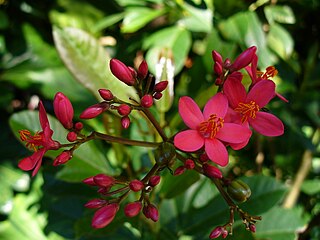
Jatropha is a genus of flowering plants in the spurge family, Euphorbiaceae. The name is derived from the Greek words ἰατρός (iatros), meaning "physician", and τροφή (trophe), meaning "nutrition", hence the common name physic nut. Another common name is nettlespurge. It contains approximately 170 species of succulent plants, shrubs and trees. Most of these are native to the Americas, with 66 species found in the Old World. Plants produce separate male and female flowers. As with many members of the family Euphorbiaceae, Jatropha contains compounds that are highly toxic. Jatropha species have traditionally been used in basketmaking, tanning and dye production. In the 2000s, one species, Jatropha curcas, generated interest as an oil crop for biodiesel production and also medicinal importance when used as lamp oil; native Mexicans in the Veracruz area developed by selective breeding a Jatropha curcas variant lacking the toxic compounds, yielding a better income when used as source for biodiesel, because of its edible byproduct. Toxicity may return if edible Jatropha is pollinated by toxic types.
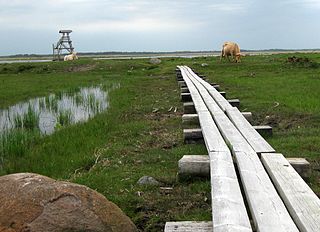
Lake Engure Nature Park is a protected park in Latvia covering 197.62 km2 (76.30 sq mi), named for Lake Engure. It was designated as a nature spot in 1998.

The gray-footed chipmunk is a terrestrial and forest-dwelling species of chipmunk and rodent in the family Sciuridae. It is endemic to New Mexico and in the Sierra Diablo and Guadalupe Mountains in the Trans-Pecos region of Texas in the United States. Its natural habitat are coniferous forests. First discovered in 1902, they are distinguished by the unique gray dorsal colouring on the hind feet, hence the common name. They demonstrate sexual dimorphism, and the female is larger than the male.

Pulsatilla patens is a species of flowering plant in the family Ranunculaceae, native to Europe, Russia, Mongolia, and China. Common names include Eastern pasqueflower and cutleaf anemone.

Lavandula multifida, the fernleaf lavender or Egyptian lavender, is a small plant, sometimes a shrub, native to the southern regions of the Mediterranean, including Iberia, Sicily, Northwest Africa and the Canary Islands.
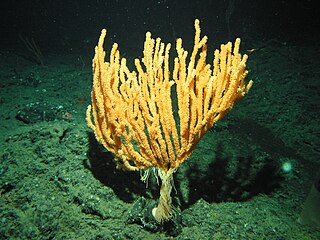
Bamboo coral, family Keratoisididae is a family of coral of the phylum Cnidaria. It is a commonly recognized inhabitant of the deep sea, due to the clearly articulated skeletons of the species. Deep water coral species such as this are especially affected by the practice of bottom trawling. These organisms may be an important environmental indicator in the study of long term climate change, as some specimens of bamboo coral have been discovered that are 4,000 years old. Bamboo corals were previously defined to be the family Isididae, based on their articulated skeletons with proteinaceous joints, but this family was shown to be paraphyletic after it was found in 2021 that this had evolved at least five separate times. As of 2023, the taxonomy of bamboo corals is being actively revised.

Ipomoea × sloteri is an allotetraploid species derived from Ipomoea × multifida. It is a cultivated species with no natural range.
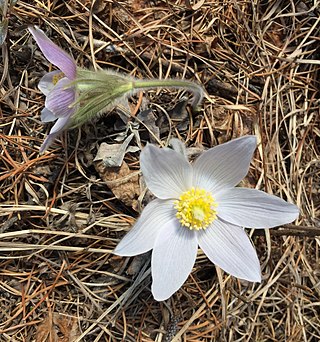
Pulsatilla nuttalliana, known as American pasqueflower, prairie pasqueflower, prairie crocus, or simply pasqueflower, is a flowering plant native to much of North America, from the western side of Lake Michigan, to northern Canada in the Northwest Territories, south to New Mexico in the southwestern United States. Pasqueflower is the provincial flower of Manitoba and the state flower of South Dakota.
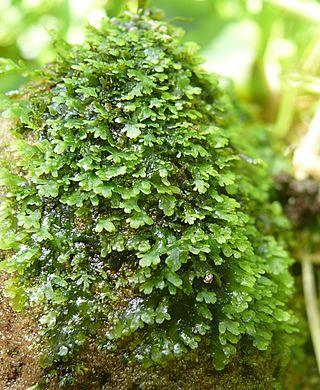
Riccardia is a plant genus in the liverwort family Aneuraceae.

Leucospora multifida, known variously as Obi-Wan conobea, narrow-leaved paleseed, cliff conobea, cut-leaved conobea, or much-cleft conobea, is an annual herb in the plantain family, Plantaginaceae, and the only species in the North American genus Leucospora.

Aneura is a genus of liverworts in the family Aneuraceae.

Aesculus parryi, known as the Parry buckeye or Baja California buckeye, is a species of shrub or small tree in the genus Aesculus. It is native to Mexico, specifically northwest Baja California.
Elizabeth Anne Brown was a New Zealand-born Australian bryologist who primarily contributed to the systematics of liverworts.
Leathesia is a genus of brown algae belonging to the family Chordariaceae.
Schizasteridae is a family of echinoderms belonging to the order Spatangoida.
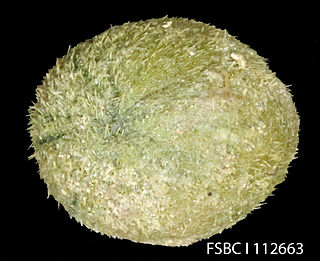
Brissidae is a family of echinoderms belonging to the order Spatangoida.

Brissopsis is a genus of echinoderms belonging to the family Brissidae.
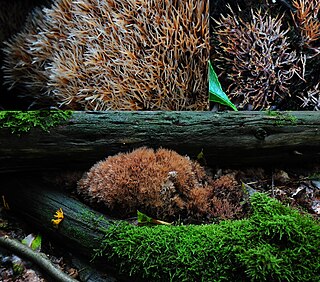
Pterula multifida is a species of mushroom producing fungus in the family Pterulaceae.

Riccardia furtiva is a species of liverwort in the family Aneuraceae. The species was first identified by Elizabeth Brown and John E. Braggins in 1989. R. furtiva is found in Australia and New Zealand, and is an epiphyte, growing on the base of other bryophyte species in shaded peaty areas.















